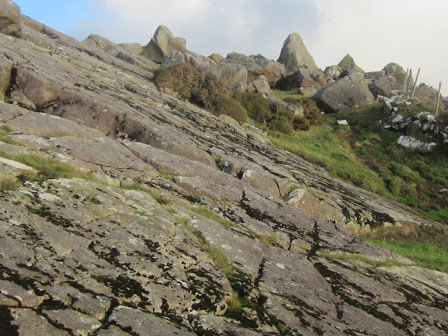I have mentioned these before, but I managed to make another visit yesterday, and was again duly impresses that we have here the most impressive of all the glaciated surfaces in Pembrokeshire -- extending across an area of about 400 sq m, with many other ice-moulded surfaces and perched blocks in the vicinity. These are all particularly prominent on the western section of the tor, where there is in effect a west-facing "escarpment" which is no doubt structurally controlled, with vertical and overhanging rock faces and a cluster of massive detached blocks, some of which certainly weigh more than 500 tonnes.
The most interesting thing about these features is that they are found on a south-facing or lee slope, whereas one might expect them on a north-facing or up-glacier slope. This suggests to me that the ice responsible was warm-based and capable of adapting to minor surface irregularities, rather than being cold and brittle.
How old are these features? Probably Devensian, but they may also be very old features simply freshened up during the LGM. It would be intriguing to get some cosmogenic dating done here.





No comments:
Post a Comment